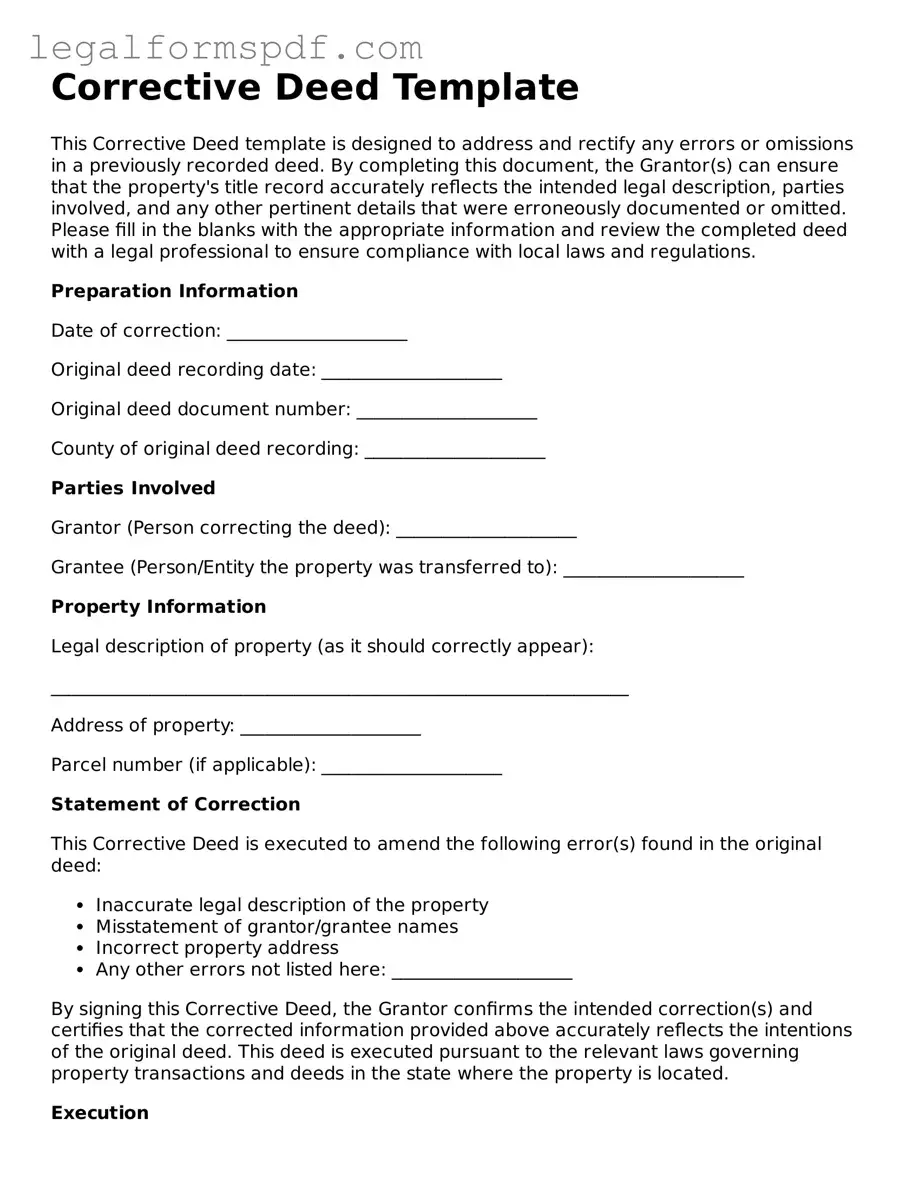Corrective Deed Template
This Corrective Deed template is designed to address and rectify any errors or omissions in a previously recorded deed. By completing this document, the Grantor(s) can ensure that the property's title record accurately reflects the intended legal description, parties involved, and any other pertinent details that were erroneously documented or omitted. Please fill in the blanks with the appropriate information and review the completed deed with a legal professional to ensure compliance with local laws and regulations.
Preparation Information
Date of correction: ____________________
Original deed recording date: ____________________
Original deed document number: ____________________
County of original deed recording: ____________________
Parties Involved
Grantor (Person correcting the deed): ____________________
Grantee (Person/Entity the property was transferred to): ____________________
Property Information
Legal description of property (as it should correctly appear):
________________________________________________________________
Address of property: ____________________
Parcel number (if applicable): ____________________
Statement of Correction
This Corrective Deed is executed to amend the following error(s) found in the original deed:
- Inaccurate legal description of the property
- Misstatement of grantor/grantee names
- Incorrect property address
- Any other errors not listed here: ____________________
By signing this Corrective Deed, the Grantor confirms the intended correction(s) and certifies that the corrected information provided above accurately reflects the intentions of the original deed. This deed is executed pursuant to the relevant laws governing property transactions and deeds in the state where the property is located.
Execution
IN WITNESS WHEREOF, the Grantor has executed this Corrective Deed on the date first above written.
Grantor Signature: ____________________
Printed Name: ____________________
State of ____________________
County of ____________________
On this day, ____________________, before me, ____________________ (name of notary), personally appeared ____________________ (name of Grantor), known to me (or satisfactorily proven) to be the person whose name is subscribed to the within instrument and acknowledged that he/she executed the same for the purposes therein contained.
In witness whereof, I hereunto set my hand and official seal.
Notary Signature: ____________________
Printed Name: ____________________
My commission expires: ____________________
